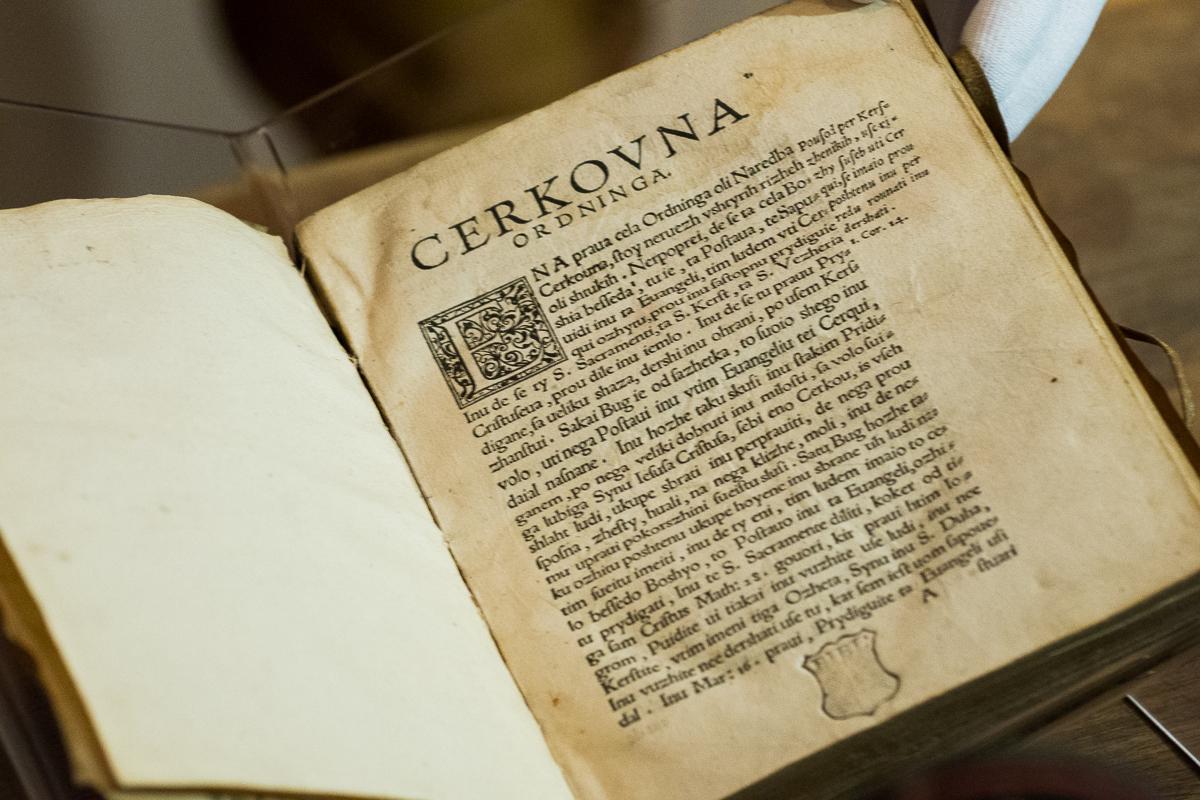
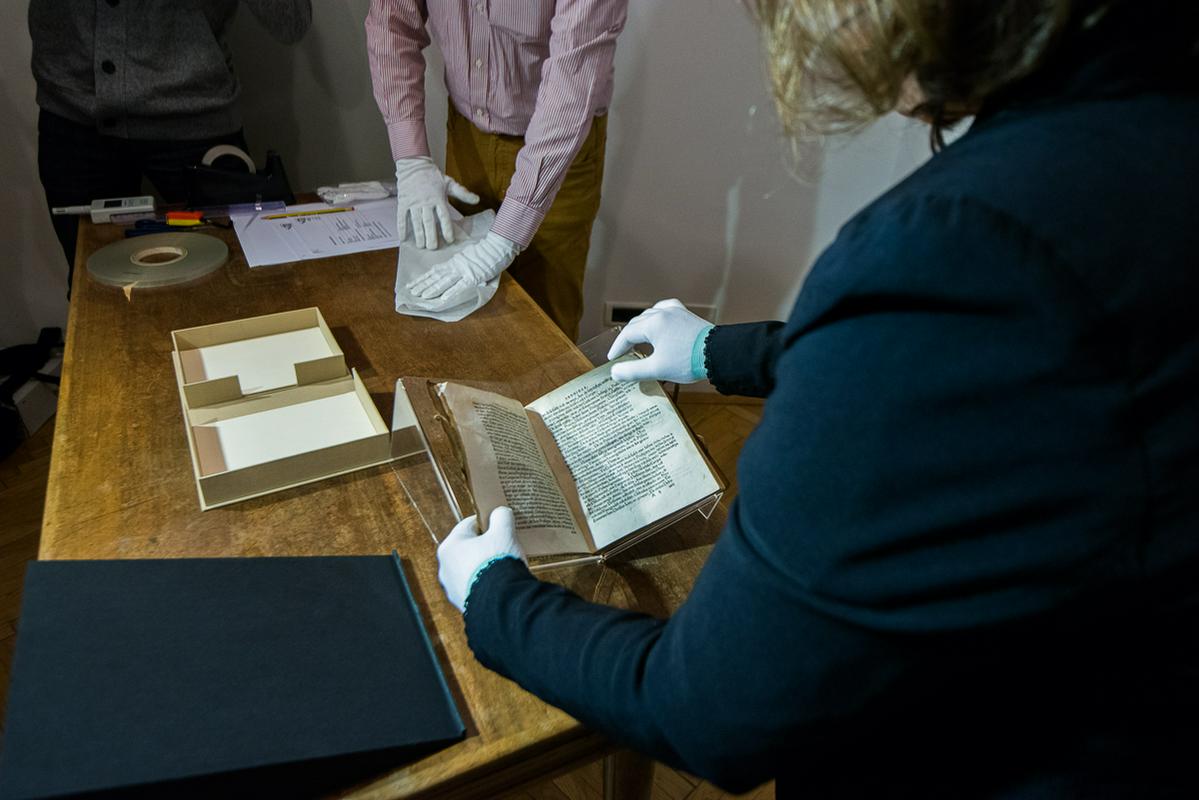
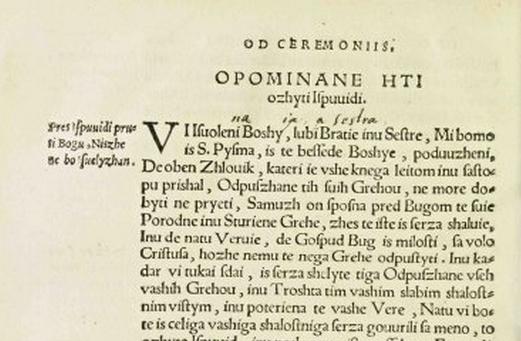
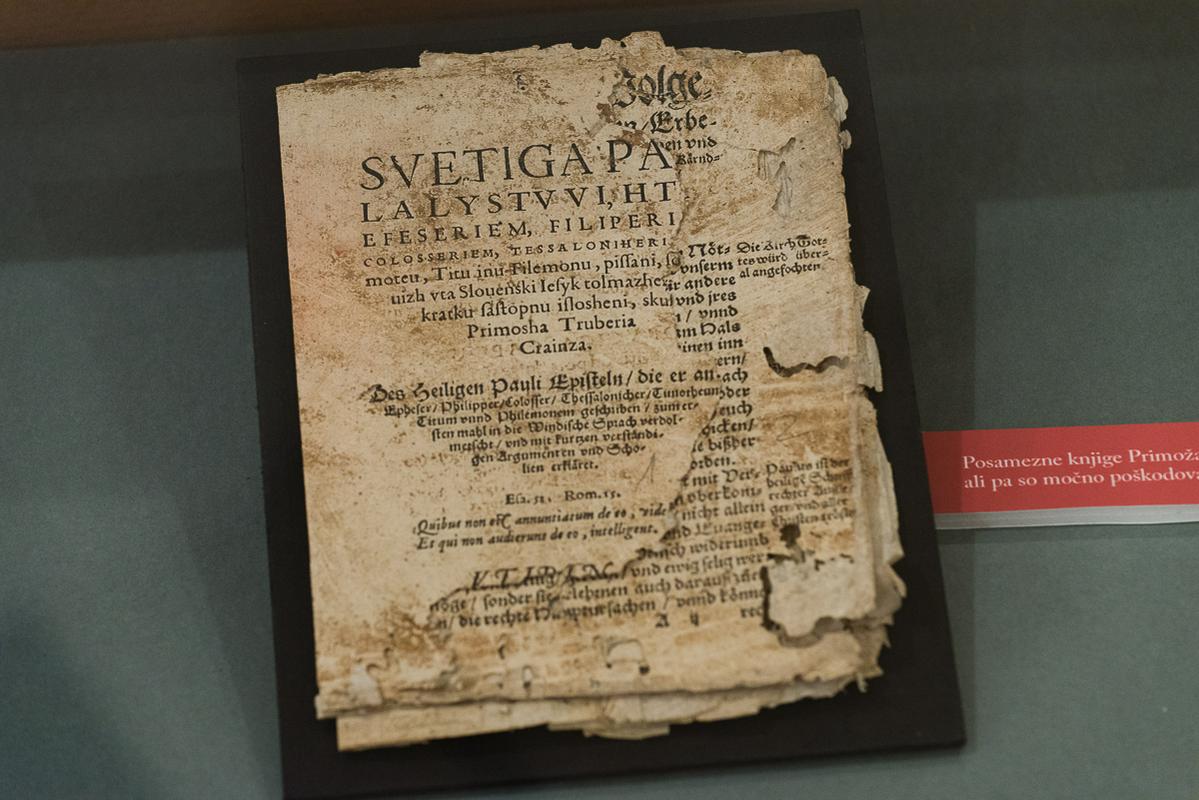
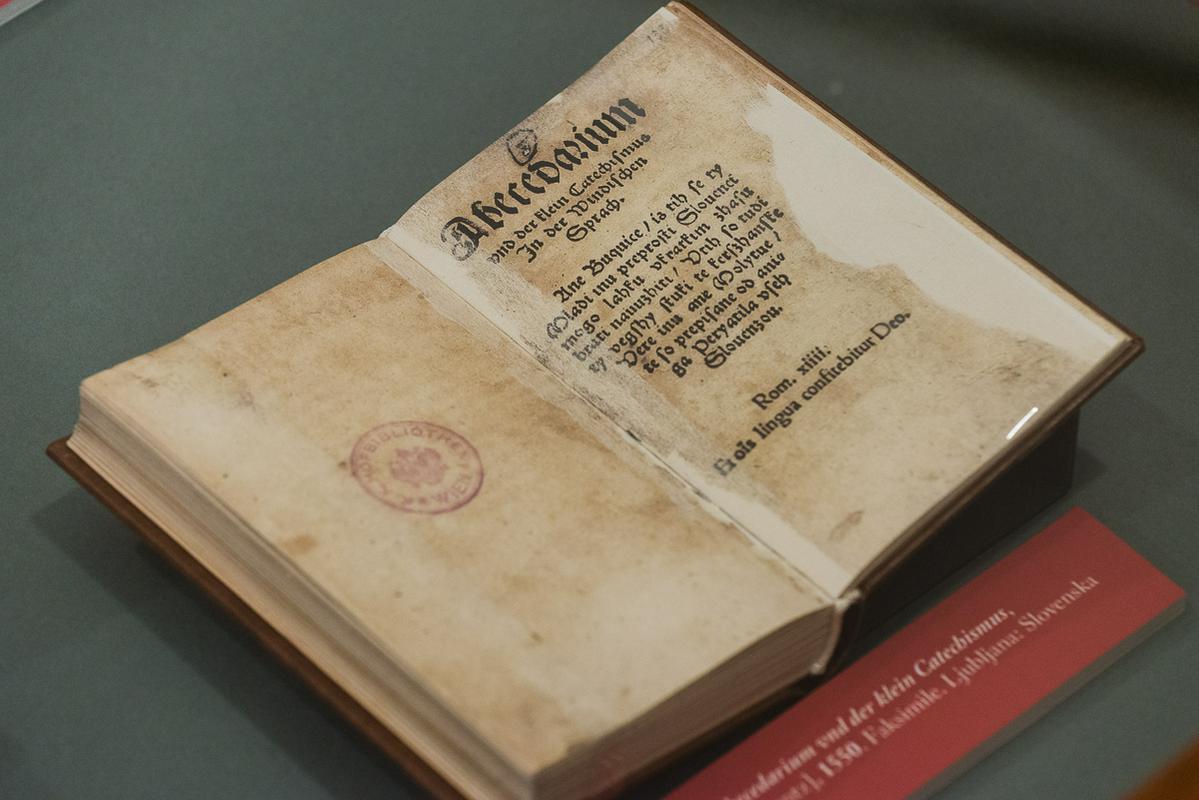
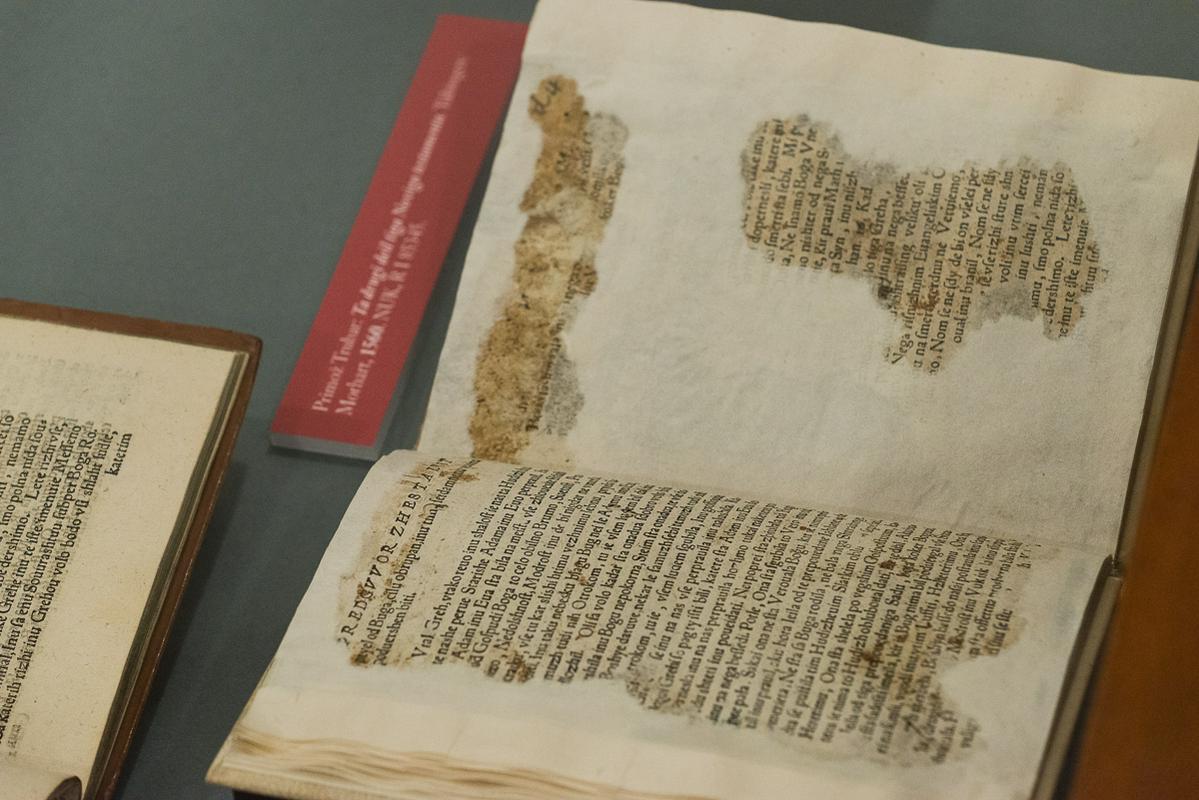
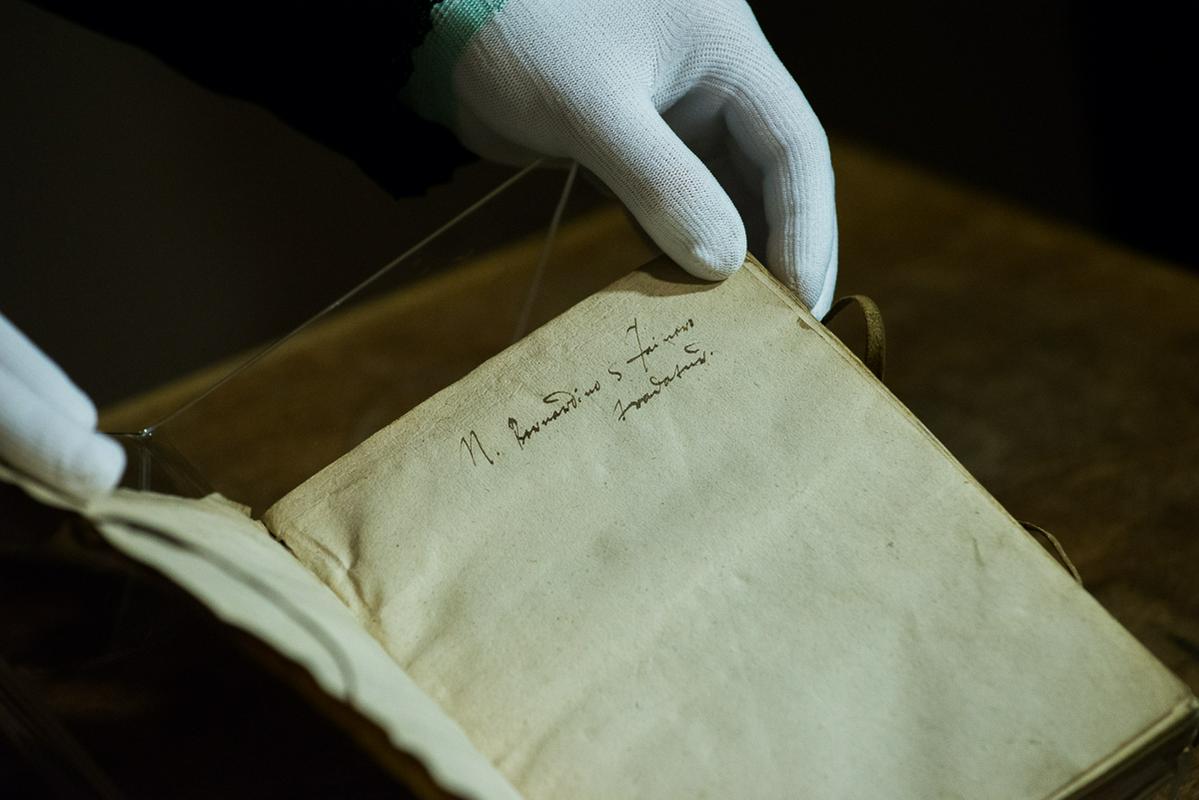
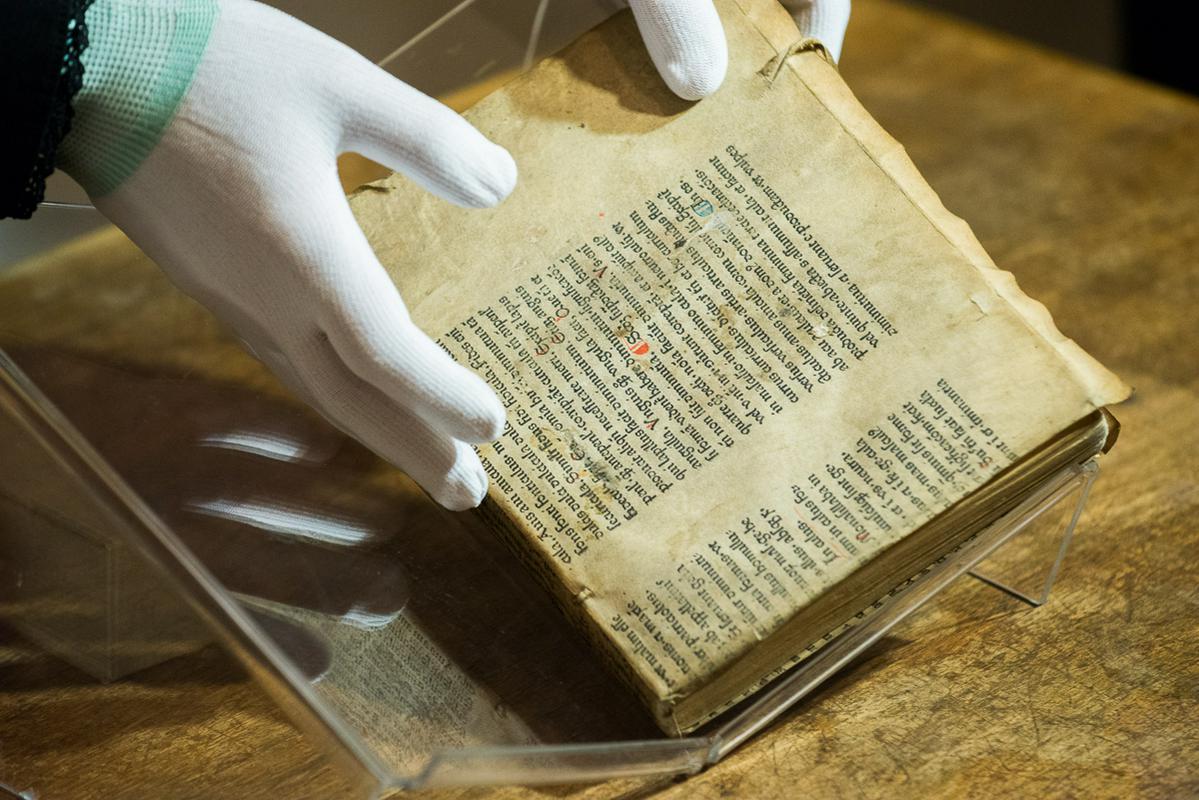
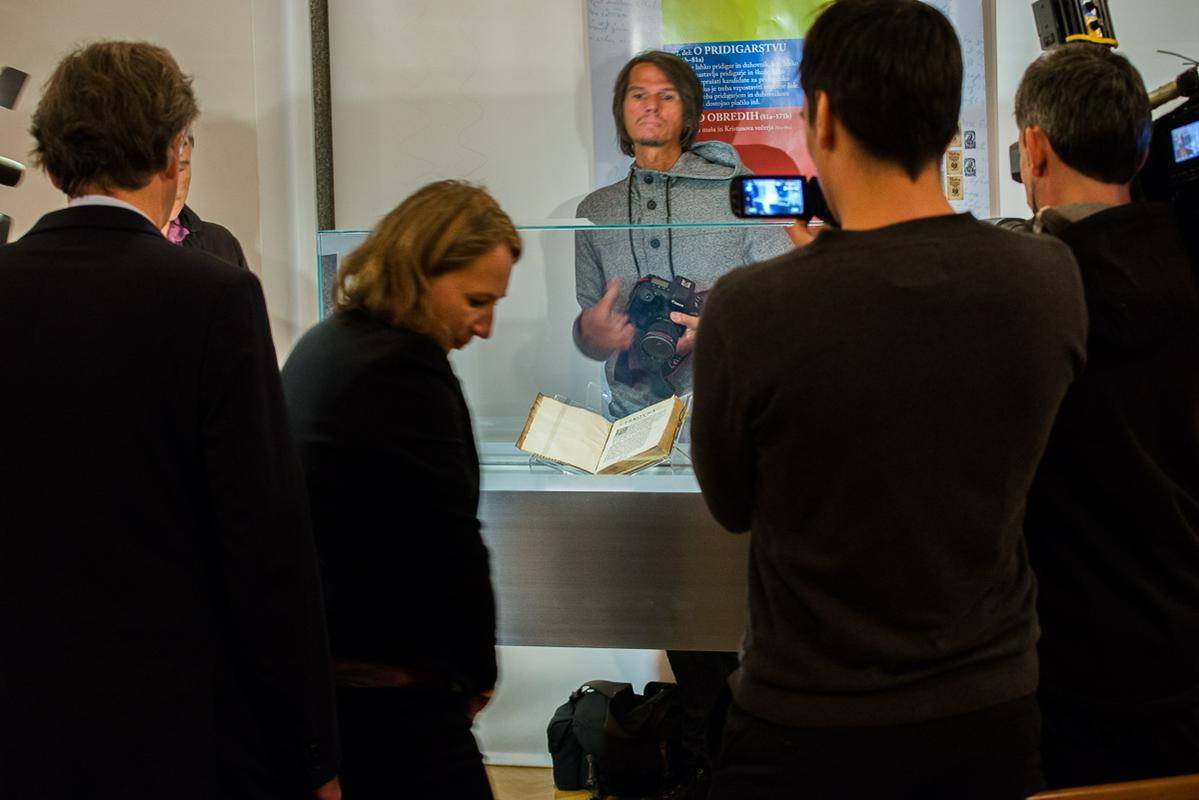
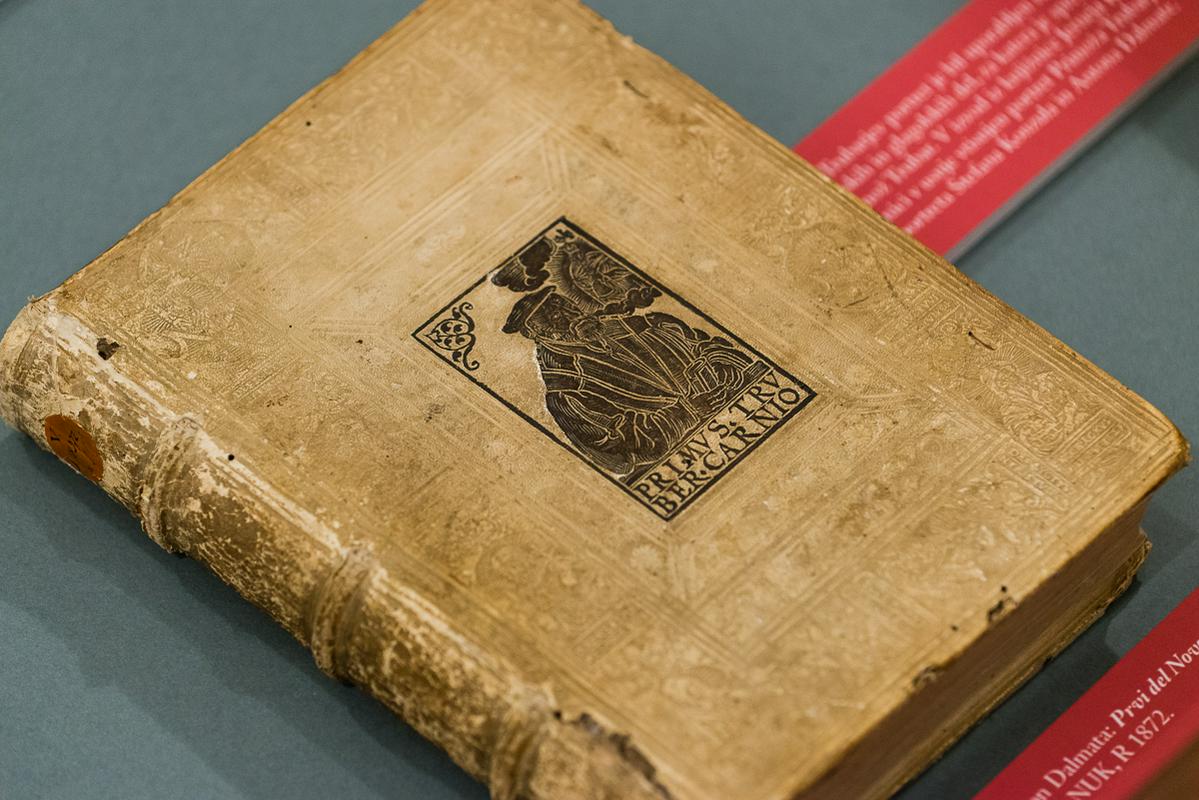
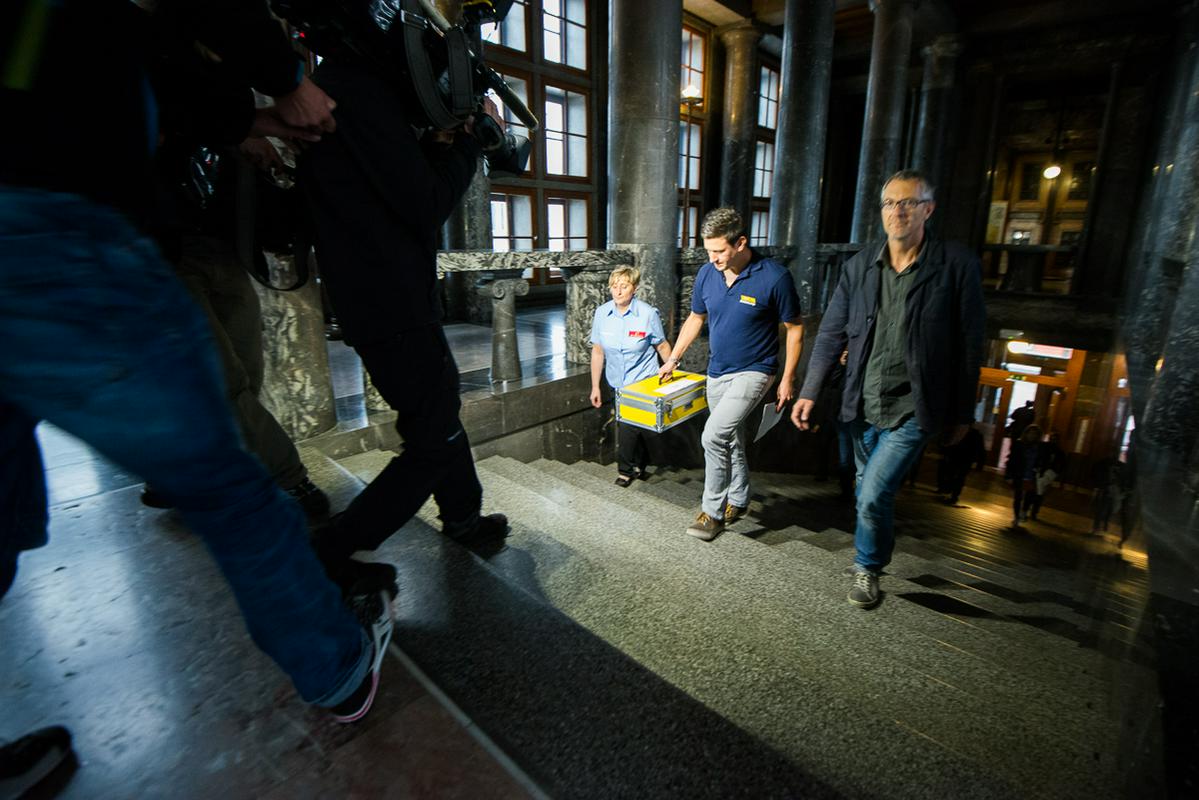
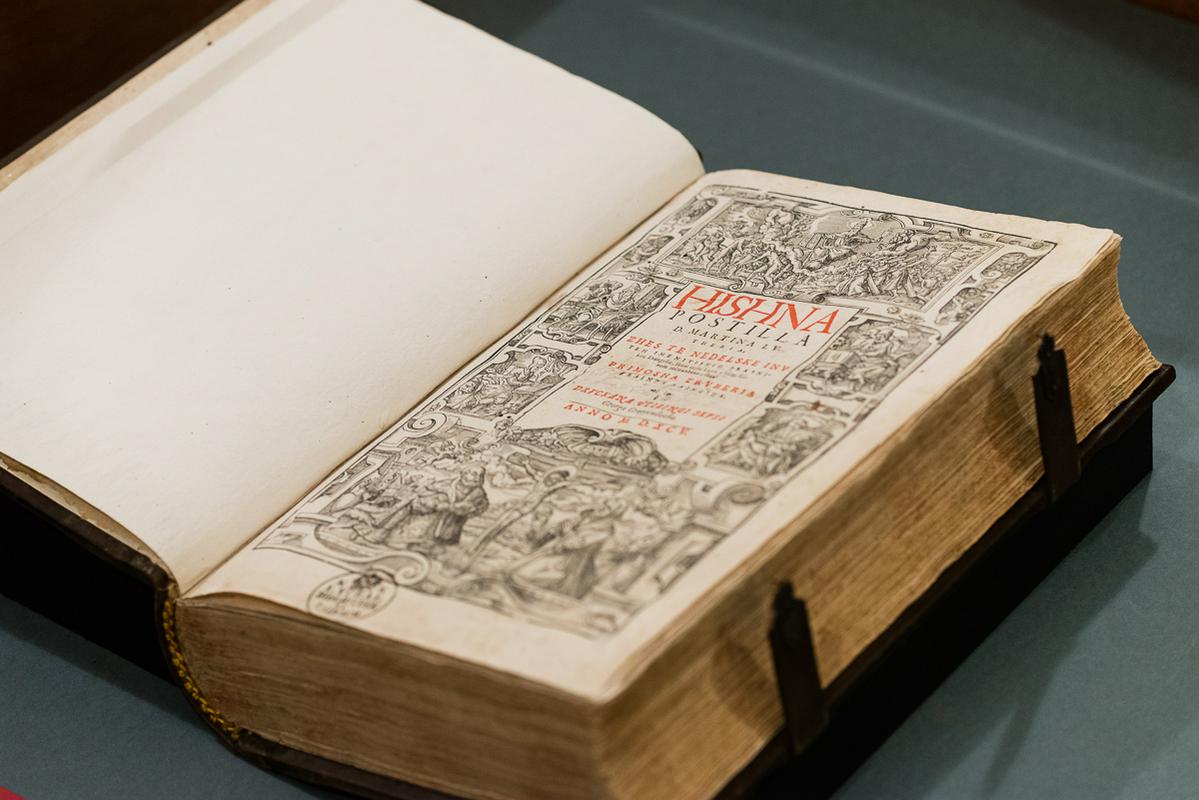

A copy of Church order, in several places complementing the copy from Vatican, was found in the Bavarian city of Memmingen. From September 4 till October 4 it will be the centre piece of the exhibition prepared by the National and University Library (NUK), dedicated to the early Slovenian press, thus marking the 450th anniversary of the release of this epochal work by Trubar.
The first written words in the Slovenian language addressing a woman
The author of the exhibition and the expert on Slovenian protestant writers dr. Kozma Ahačič from the Research Centre of the Slovenian Academy of Sciences and Arts (ZRC SAZU), got the confirmation of the value of the book, found in pristine conditions, as soon as he opened the cover page. But the real surprise came later, in the form of small annotations between the lines of Trubar's text. Providing his assumptions are correct, in this exceptional find the first text in the Slovenian language addressing a woman has been preserved.
Women were significant users of Protestant press
The original text by Trubar read: Vi izvoljeni božji ljubi Bratje inu Sestre (referring to 'brothers and sisters'), but somebody had added the suffixes denoting female genders, turning the text into Vi izvoljena božja ljuba Sestra (referring to 'a sister'). It is obviously an adaptation of ceremonial texts, by which Trubar's original source material intended for addressing multiple worshipers, adapter for the purpose of addressing a single woman. As Ahačič, who spent the last year for an intensive study of the preserved copy of Trubar's work, explained, the annotation was obviously made by a Protestant preacher for the purpose of performing a ceremony with a woman.
The binding is older by a century
For the exhibition, Church Order will be opened to the most representative, covering page (the mentioned annotations can be seen in the digitalized version of Church order digitalizirani objavi Cerkovne ordninge, on the website of the Memmingen City Archives), and it is positioned in such a manner that the binding is visible as well, a century older than the book itself. The binding is made of a page from the Johan Balbi work Catholicon from 1460, an interesting person as well, and the reason this copy of Church Order has been found. This copy was tracked by Urlich D. Oppitz, who obtained a doctorate from the history of law, and was brought to the Memmingen library through his research of fragments of medieval manuscripts, and incunabula used in the 16th century for binding books. When a page from Balbi's work led him to Church Order, he recognized its value, and contacted the editor of Trubar's complete works Igor Grdina at ZRC SAZU, who left the further research to Kozma Ahačič.
Trubar's Church Order has not been hidden among the innumerable quantity of books; an expert eye would have recognized its value only by leafing through the catalogue of the library into which it had been recorded, explains Kozma Ahačič. That was the method by which he had found four more protestant printed materials in Memmingen, previously unrecorded in Slovenia.
So, why was this book discovered by accident, and it hasn't been known before? Ahačič says that in European libraries and archives there must still be a number of works relevant for the Slovenians, yet the lack of financial support prevents blind search. A number of works has been discovered in the seventies and the eighties, when there was much more understanding for financing of such travels lacking a firm goal.
The book remains in Memmingen
The Slovenian Ministry of Culture has shown interest for the purchase of the book from the very beginning, yet Memmingen was not in favour of it. They are aware of the unique importance of the book for the Slovenian culture, but its importance for the history of Memmingen is the very reason they are reluctant to take it out of their historical context.
The work emphasizing Trubar's genius
Ahačič has noticed that in spite of the awareness of the importance of Church Order the public still doesn't know much about it. The situation might change with the translation of Trubar's work which will be published soon. Church orders experienced flowering in the 16th century with the Protestant reformation, after the early Christian tradition of such works, and Trubar followed the example of previous church orders and translated them, compiled them into his own work, yet he added one fifth of his own text, and skilfully created a completely new whole. His work was based on his deep knowledge of the conditions in the then Slovenian area, and its needs.
... a priceless monument of the history of the Slovenian language
Church Order has a prominent place in the Slovenian cultural history due to its language, and theological value. Published in Tübingenu in 1564 in 300 or 400 copies, it was the first work written in the Slovenian language, intended exclusively for educated elite readership, yet it was the first work to establish the Slovenian language as the language for all church ceremonies. It is obvious from the text for who the text was intended by Trubar, as even when translated into the modern Slovenian language the text remains quite complicated, with a number of foreign words and rhetorical figures. From the theological point of view, Church Order is a testimony of Trubar's complete dedication to Christian teachings, his unbending religious mien – those who believe, should preserve their faith; non-believers or those whose faith is false should gain it.
Indestructibility of the written word
By issuing Church Order Trubar interfered with the exclusive right of the province prince, the only person allowed to regulate religious matters, Archduke Charles gave order that Church Order should be confiscated and destroyed, which led to Trubar's final emigration from the home land.
Archduke Charles was successful in banishing Trubar, yet the fanatical Catholic had no real power in his struggle against the Protestants. They have left an indelible impression on the Slovenian culture, in spite of prosecutions. The Slovenian written language they have established was taken over, along with the translation of the Bible during the times of Counter-Reformation. The language of the Slovenian protestant writers thus remained alive, and has been developing until the present days.
The second purpose of the exhibition is to show our wealth, what has been preserved, and what is kept in the NUK collections, says Kozma Ahačič. He is drawing attention to poorly preserved books, which are because of that rarely shown to the public. Through details, such an exhibition also draws attention to the restoration trade and shows how the books, turned into a pile of fragile leaves by time, can be restored and prepared for new readers and researchers.

































































